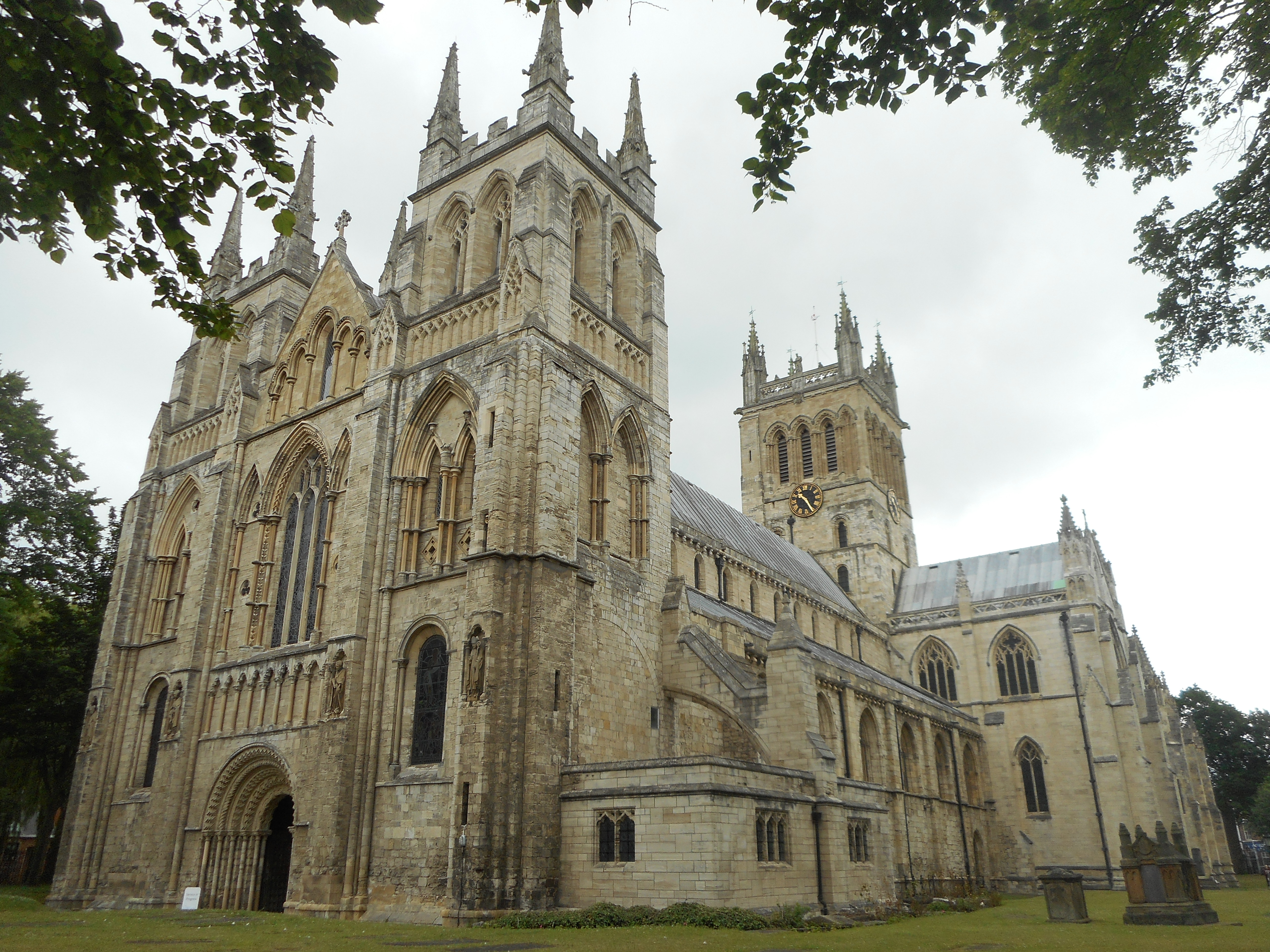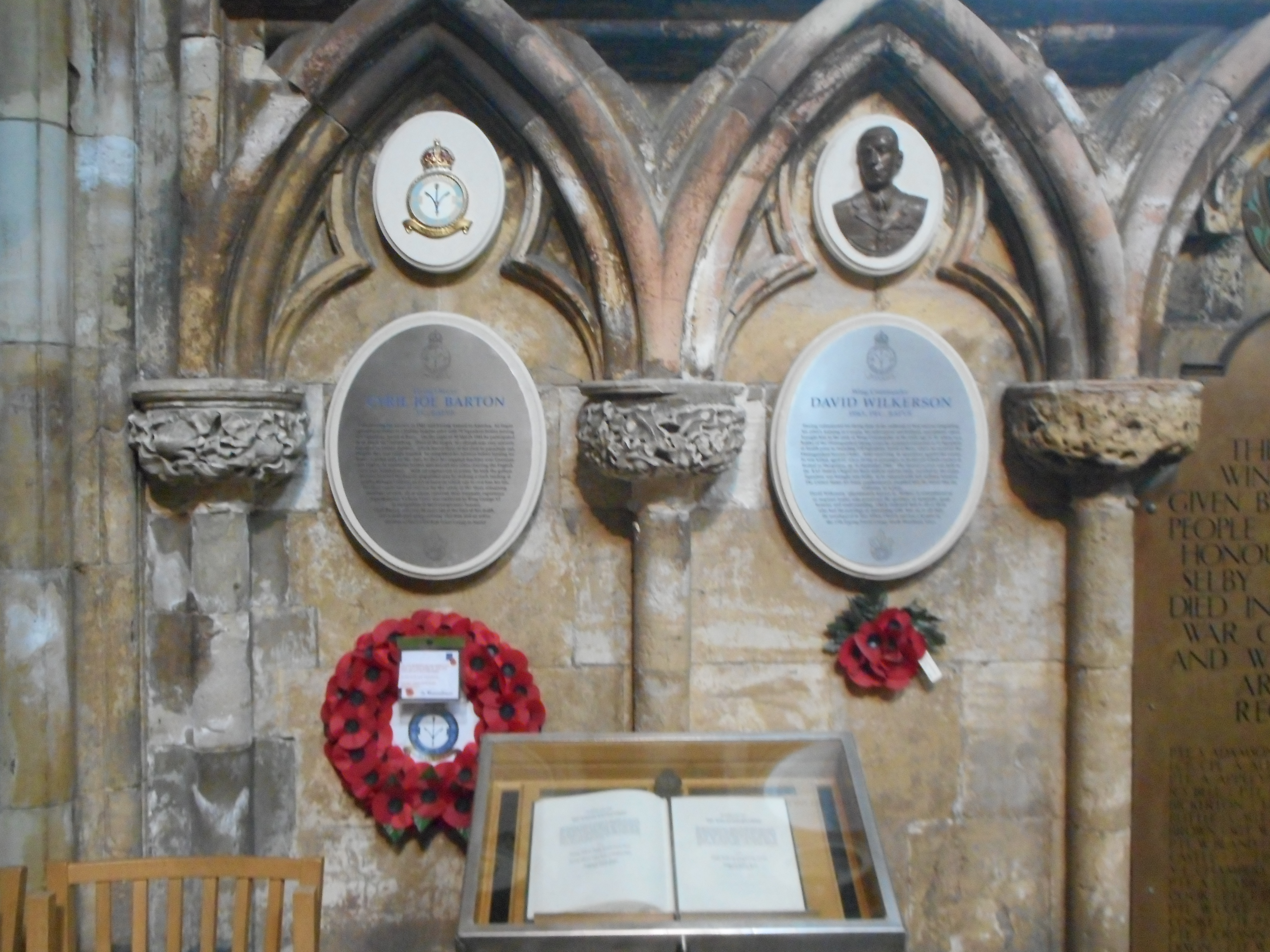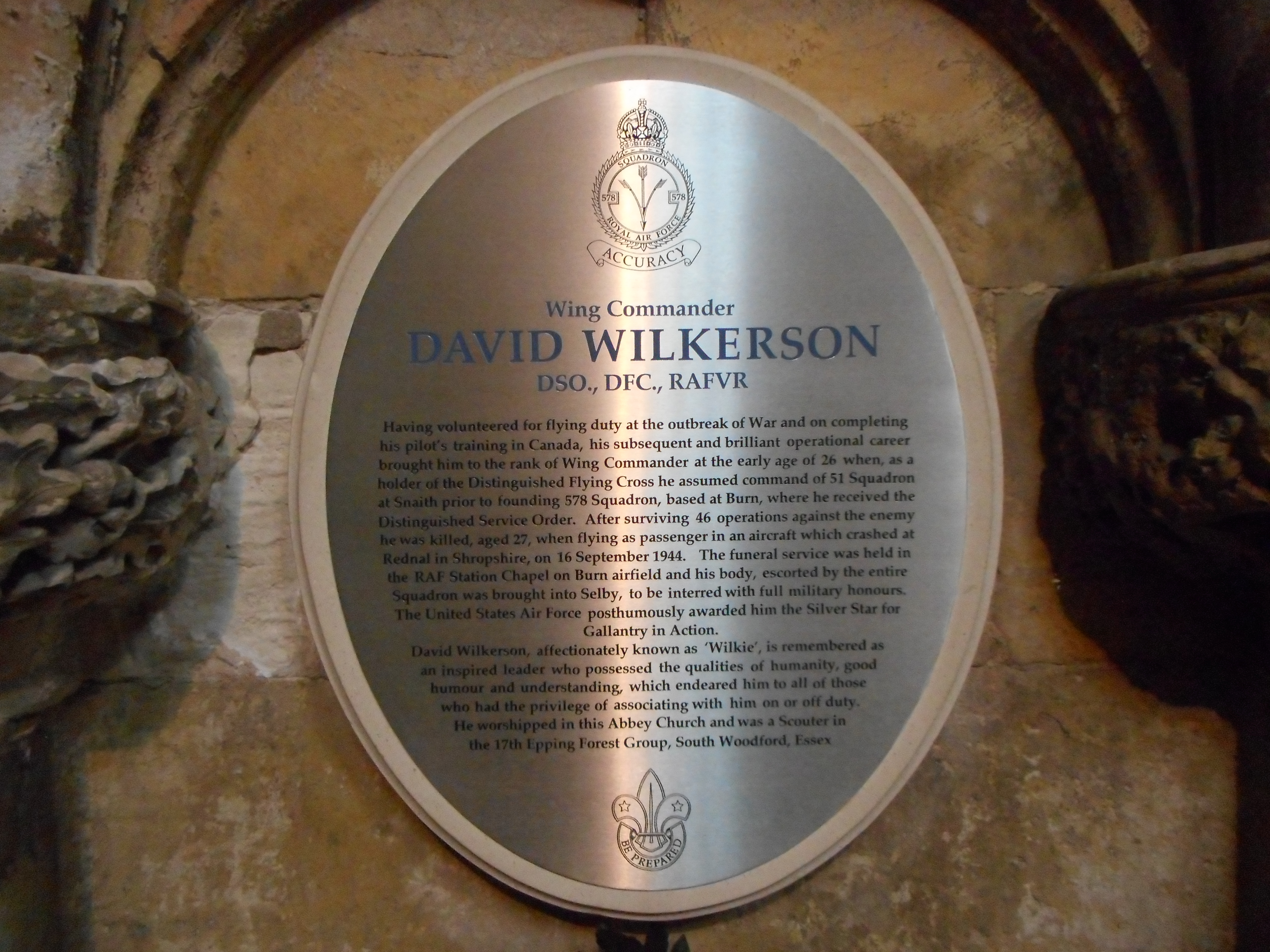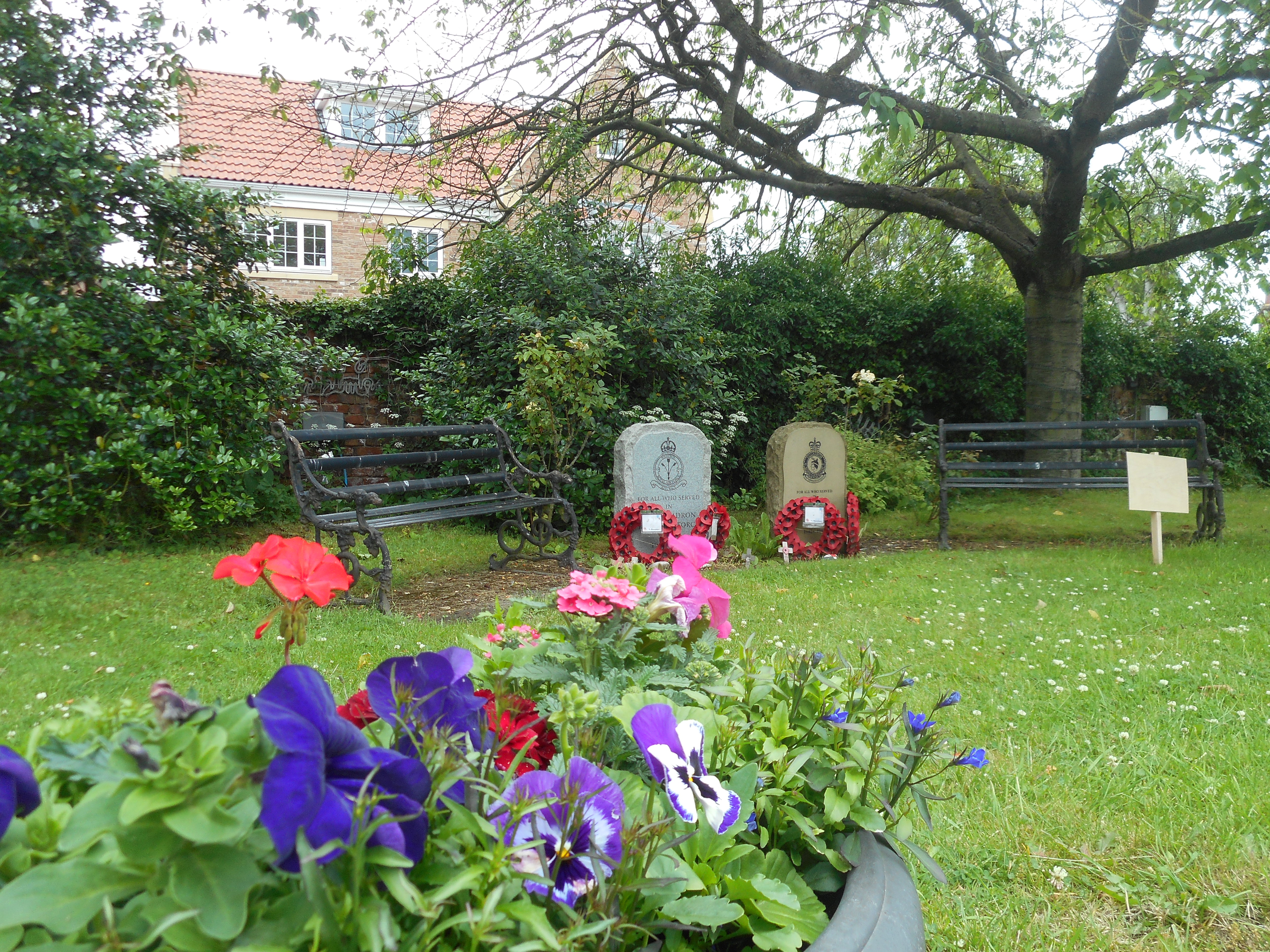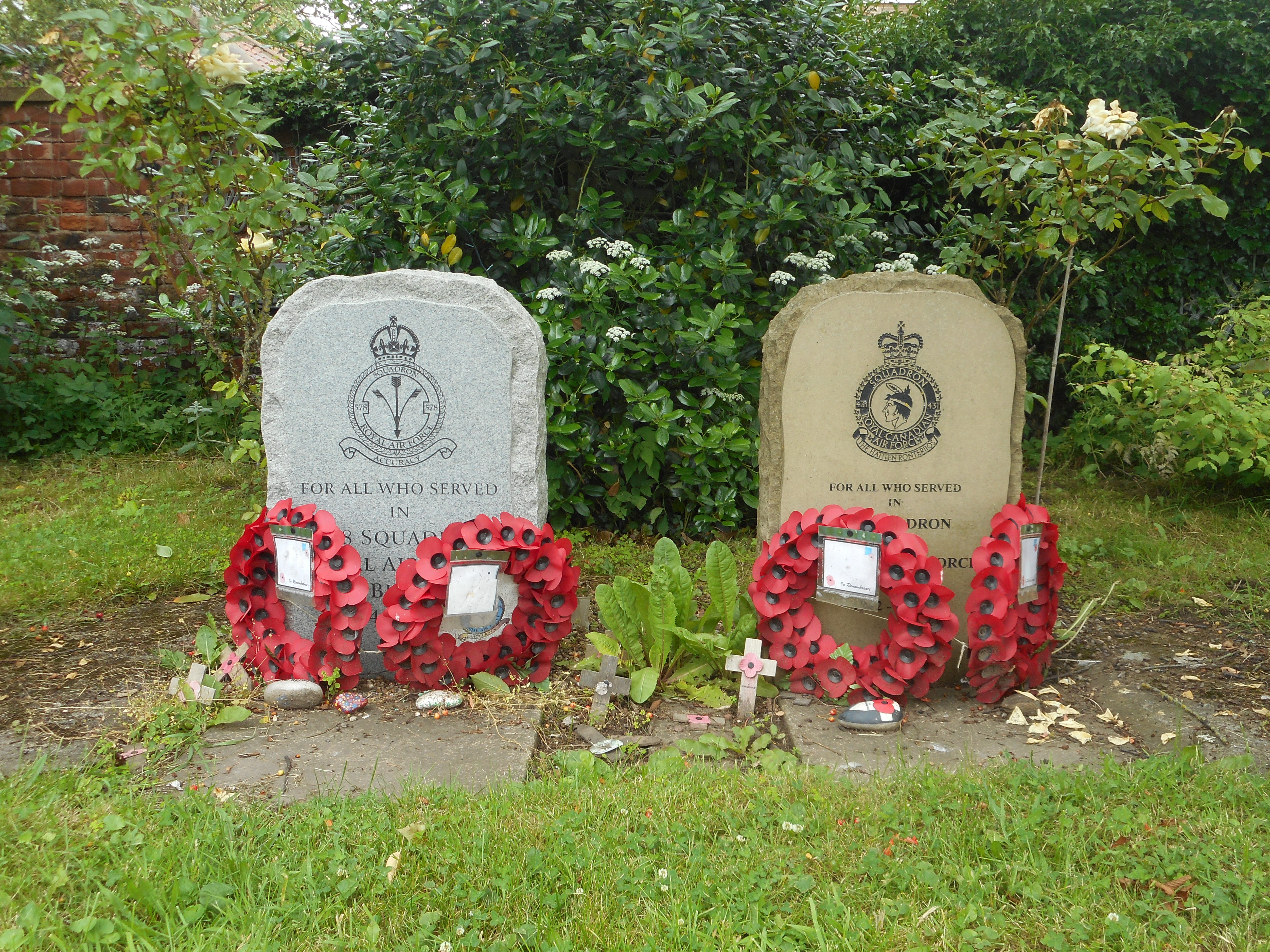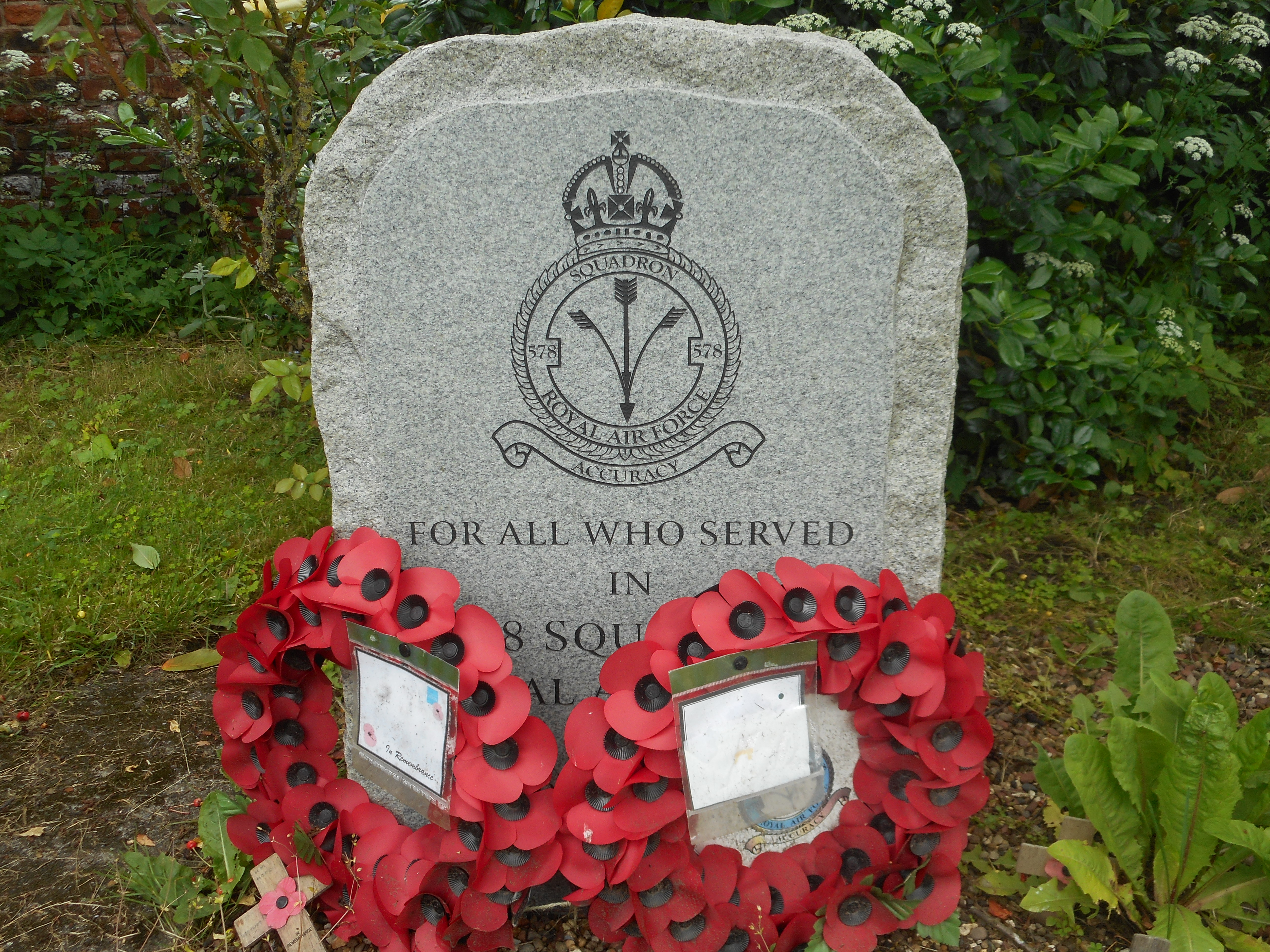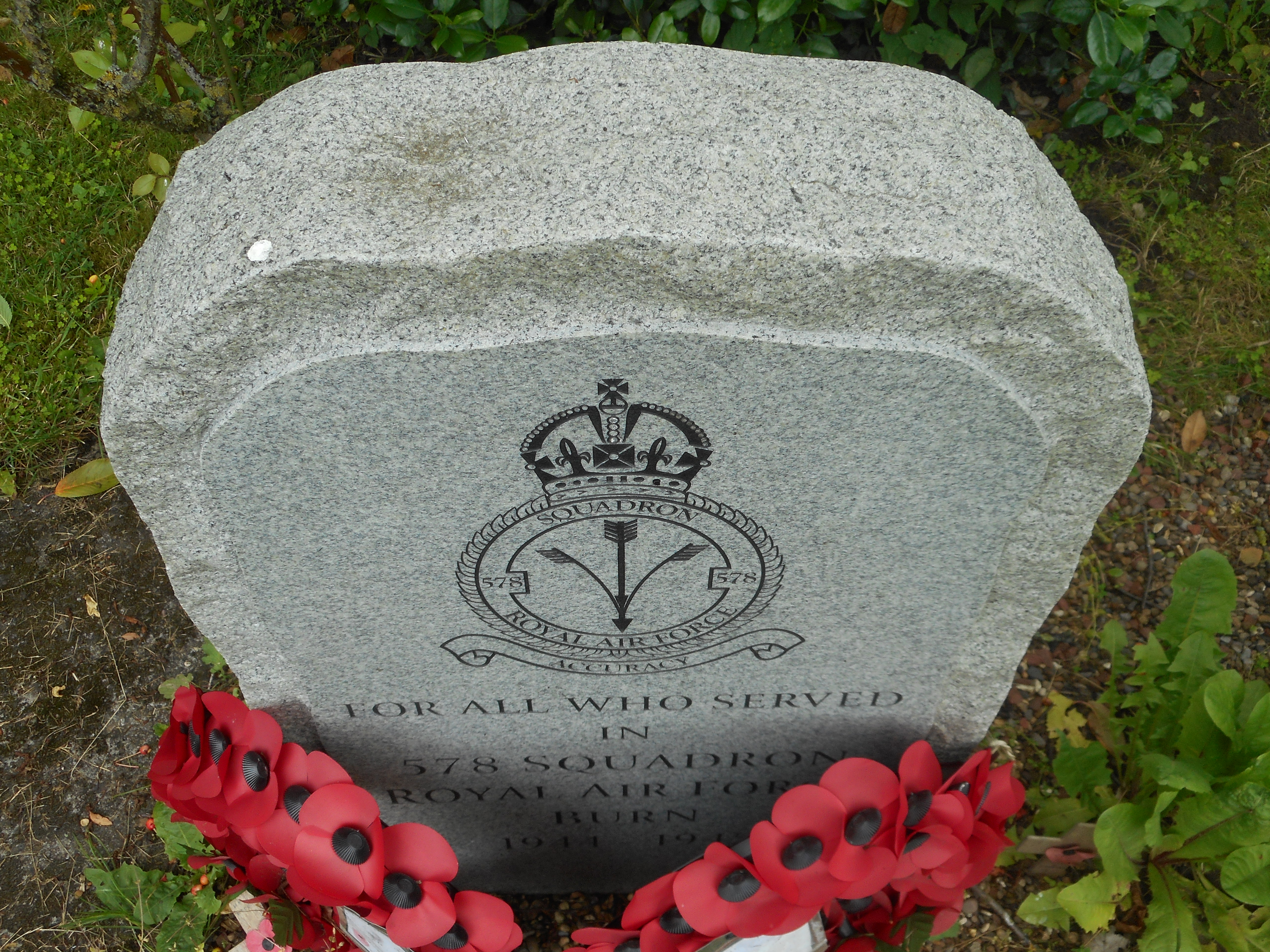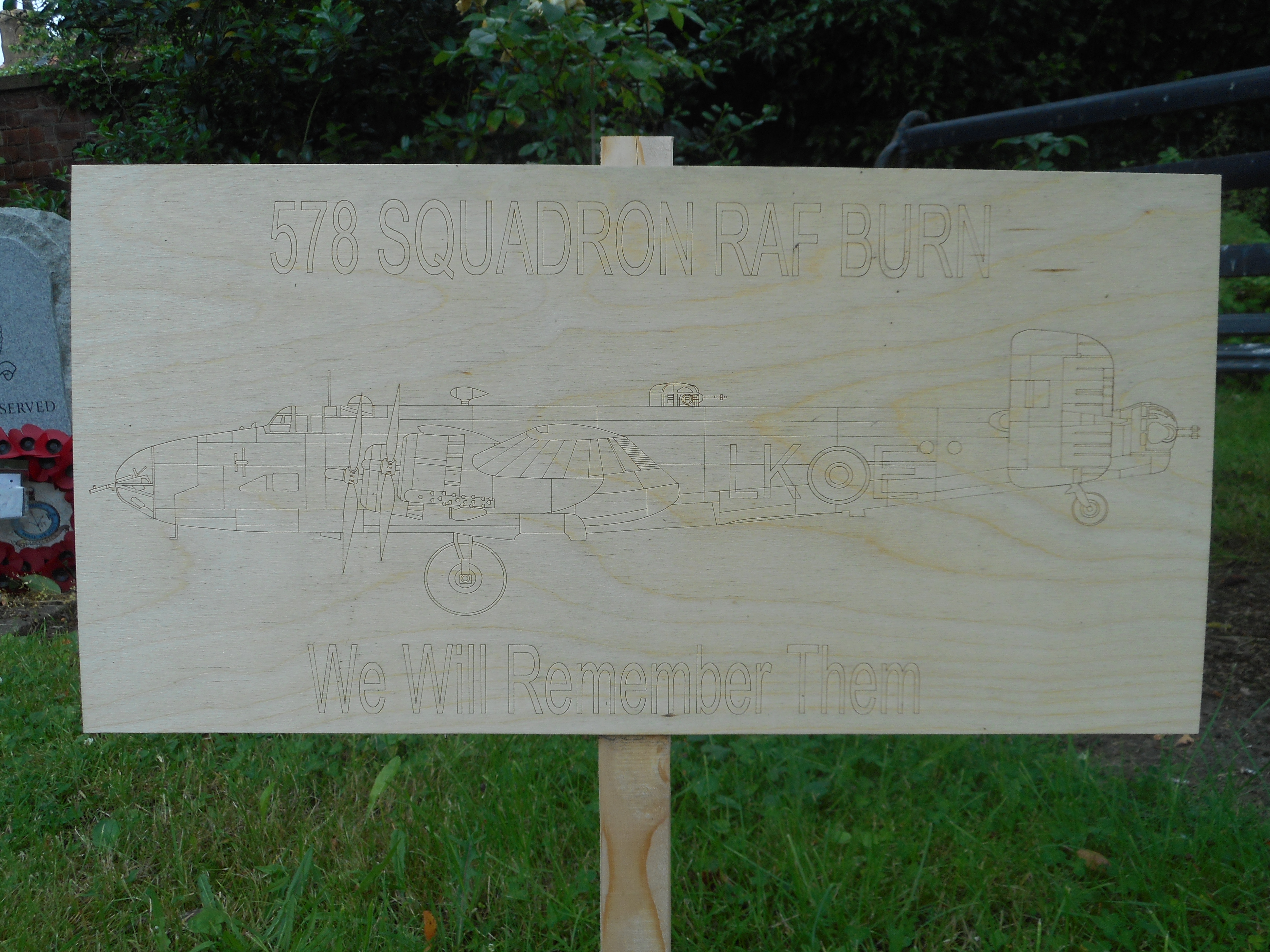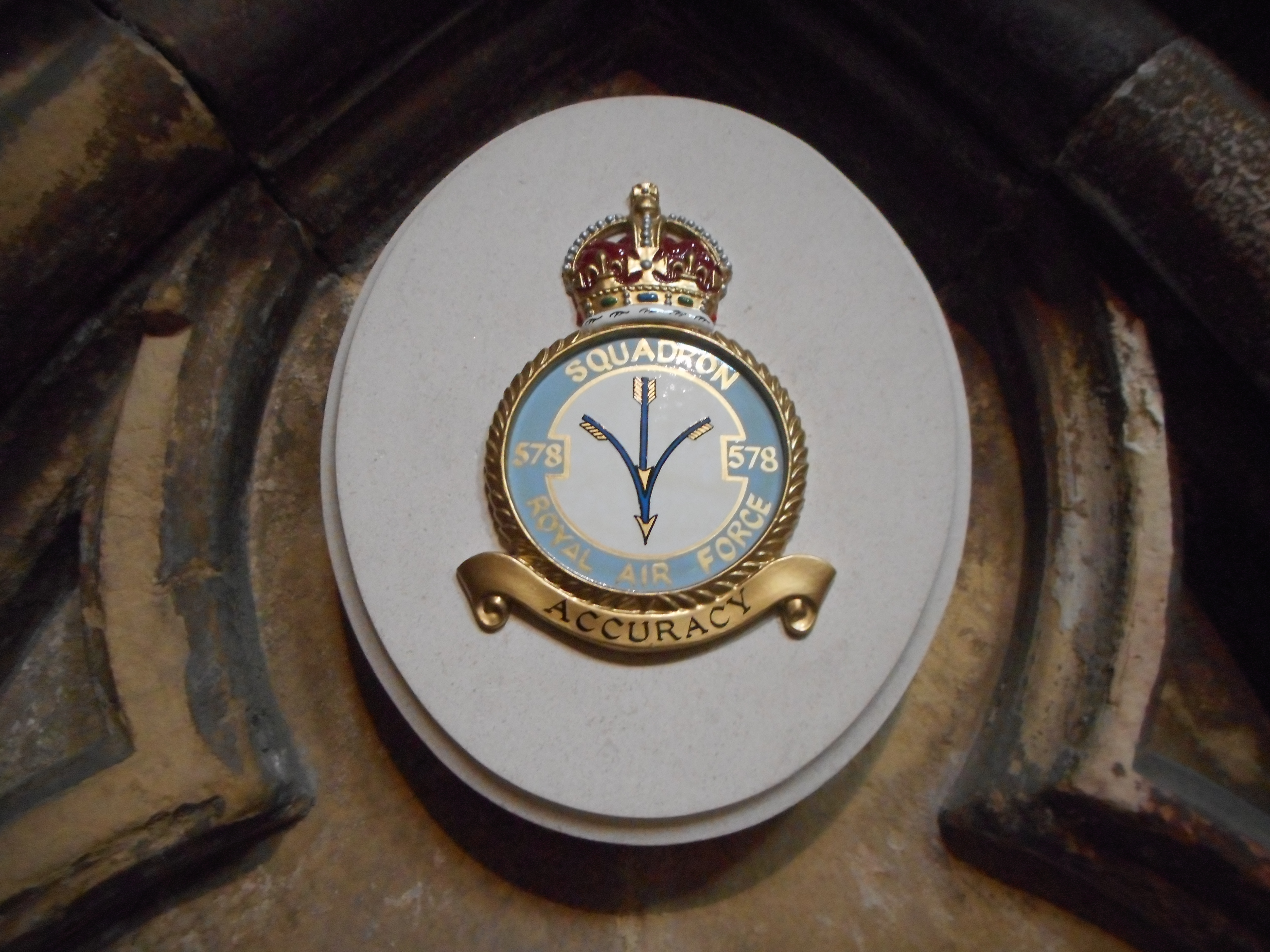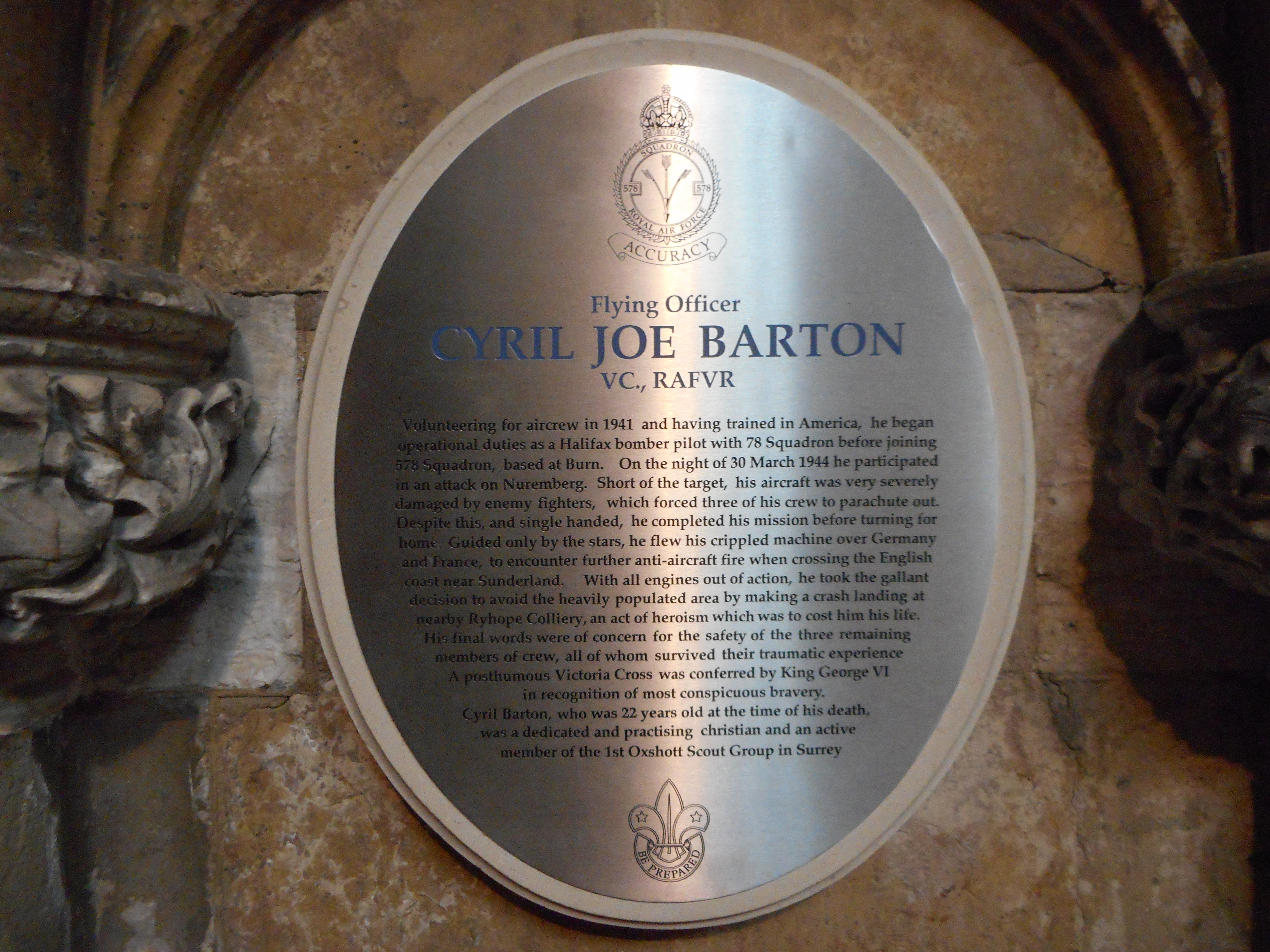| Although David had officially left 578 Squadron on 28 August 1944 for a new role with No. 9 Course Empire Central Flying School, Hullavington, Wiltshire, he had been there scarcely two weeks when he was tragically killed. IBCC therefore feels that his contribution to, and popularity within, Bomber Command necessitates that be included in the Losses Database. That his body was returned to 578 Squadron for them to conduct the funeral service and lay him to rest in the local cemetery is an indication of his popularity amongst aircrew and ground staff at RAF Burn and demonstrates that 578 Squadron, and hence Bomber Command, is the rightful place to commemorate his life and work. |
| He enlisted for the Royal Air Force Voluntary Reserve on 20 January 1940 and on 18 June joined No.1 Initial Training Wing at St. Johns College Cambridge as 911952 AC2 Wilkerson D.
On 13 March 1942 the London Gazette published David's award of a Distinguished Flying Cross: "Acting Flying Officer David Scott Shearman WILKERSON. Royal Air Force Volunteer Reserve, No. 35 Squadron. As a pilot, and captain of aircraft, this officer has shown outstanding ability and keenness and he has succeeded in reaching and bombing his objectives with unfailing regularity and success. Flying Officer Wilkerson has attacked a wide range of enemy targets, including Berlin, Nuremburg, Kiel and Essen, besides other industrial centres and dockyard towns. He took part in 2 daylight raids on the enemy warships at Brest, and in spite of fierce opposition, carried out his attacks with the utmost skill and determination. Flying Officer Wilkerson has proved himself to be a courageous captain".
On 23 May 1944 the London Gazette published David's award of a Dintinguished Service Order with the following citation: "This officer has completed many sorties on his second tour of operations. He has displayed high powers of leadership, great skill and determination, qualities which have earned him much success. He is a devoted and zealous squadron commander, whose great drive and tactical ability have contributed in a large measure to the high standard of operational efficiency of the squadron".
He was later awarded the Distinguished Service Order on 23 May 1944, the citation in The London Gazette reading: "This Officer has completed many sorties on his second ‘tour’ of operations. He has displayed high powers of leadership, great skill and determination, qualities which have earned him much success. He is a devoted and zealous Squadron Commander, whose great drive and tactical ability have contributed in a large measure to the high standard of operational efficiency of the Squadron". |
| On 15 September 1944, David, accompanied by four other officers, paid a flying visit to 61 OTU at RAF Rednal, Shropshire, to acquaint themselves with the training courses being undertaken and assess the ability of the establishment to fulfil them. They flew in an American built Martin Baltimore, a light bomber, with David at the controls. On leaving, the aircraft failed to gain height and crashed beyond the trees on Tedsmore Hill. His body was returned to RAF Burn for burial.
An entry in the 578 Squadron Operation Record Book of 20 September 1944 stated: "The funeral took place of Wing Commander D S S Wilkerson DSO DFC, late Commander of the Squadron. The funeral service took place in the Station Church. Squadron Leader B P K Watts and Squadron Leader S V Hollis the Church of England and Other Denomination Padres officiated. The interment took place in the Services Plot in Selby Cemetery. The funeral was attended by Mr and Mrs J S Wilkerson and Flying Officer Wilkerson, the father, mother and brother of the deceased. Also present were the Air Officer Commanding No. 4 Group, Air Vice Marshal Carr CB CBE DFC AFC, Air Commodore J L Kirby CBE commanding No. 41 Base, the Station Commander Group Captain J Warburton and the Squadron Commander, Wing Commander A G T James OBE. Representatives of Headquarters No. 4 Group and of Stations and Units in the Group also attended. Personnel from the Squadron lined the route from the Church to the Hearse and marched past the graveside paying their last compliments to one who had not only been their Squadron Commander, but had also earned their deepest respect and affection. Known to all as ‘WILKIE’, Wing Commander D S S Wilkerson DSO DFC will never be forgotten by any who served with him".
Tributes appeared in the London Gazette as well as National newspapers such as The Times, The Daily Telegraph and in the local press of Selby and Woodford. Many glowing tributes are to be found on the 578 Squadron website: http://www.578squadron.org.uk/wilkerson/ which IBCC acknowledges as the source of much of this information.
In November 1944, the United States Air Force accorded David the exceptional honour of a posthumous Silver Star award. The citation reads: "For gallantry in action against the enemy while participating in many attacks on some of the most heavily defended targets in Germany. His ability to anticipate enemy tactics and defences was invaluable, while his fearlessness in combat and offensive spirit have been an inspiration to his fellow fliers and reflect highest credit upon himself and the Armed Forces of his Country". |
